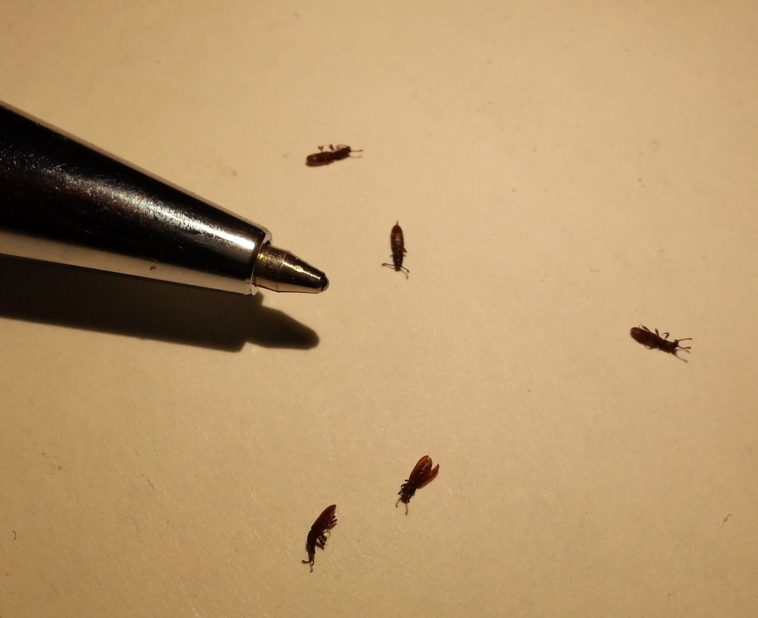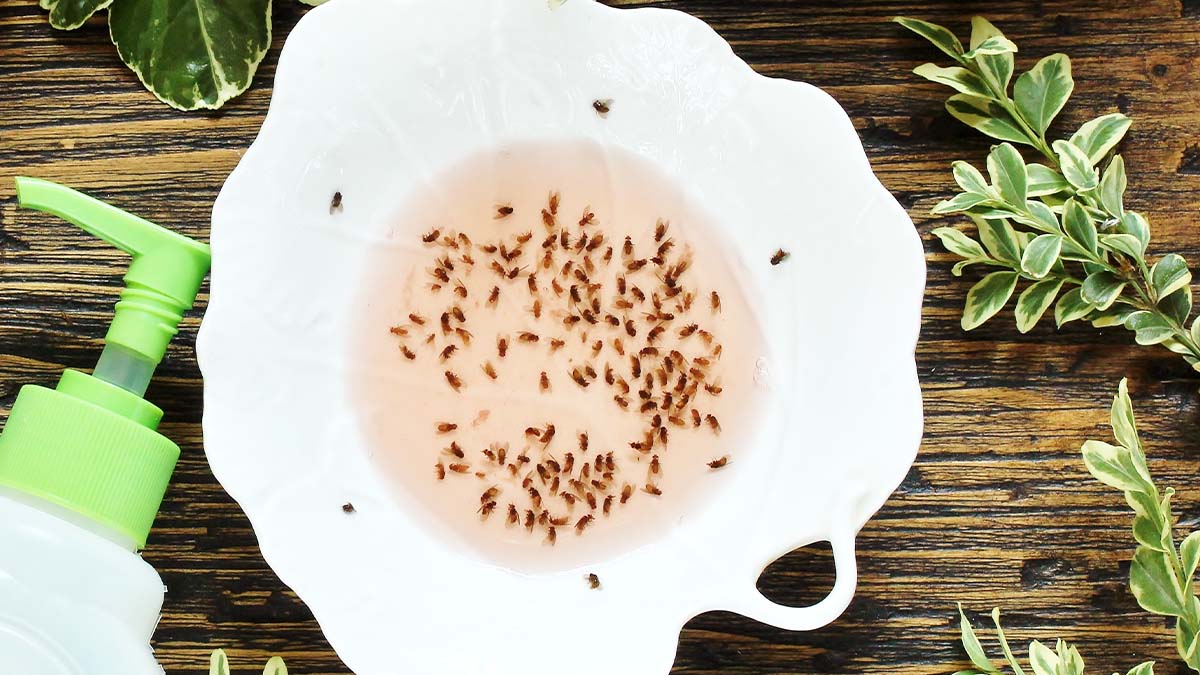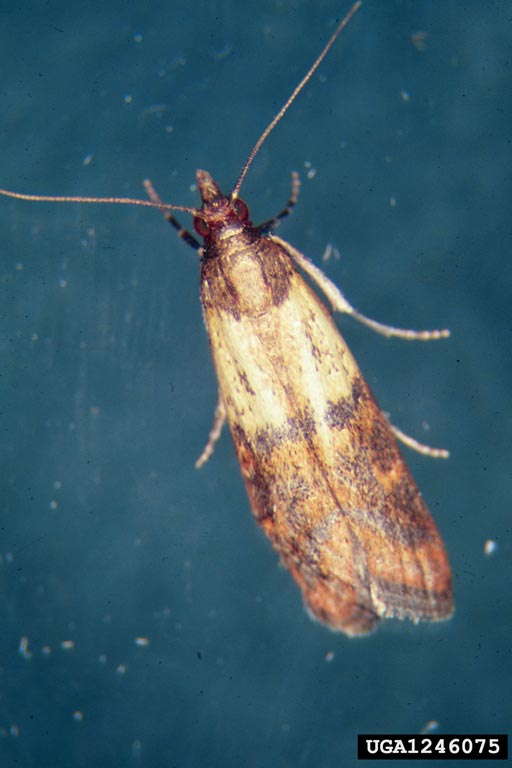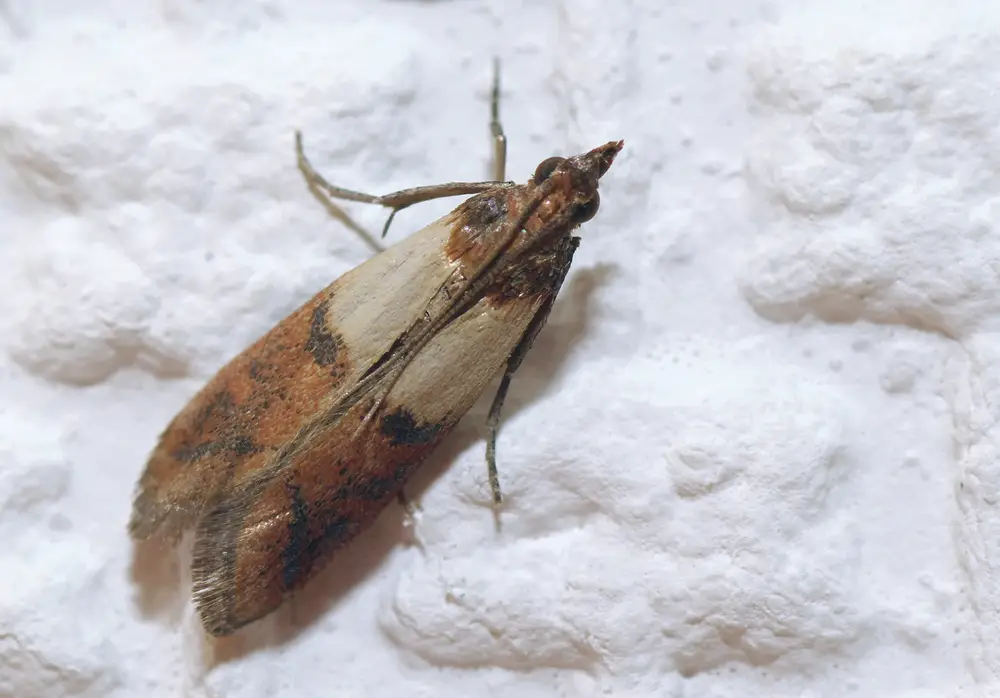1. How to Get Rid of Little Brown Bugs in Kitchen
If you've noticed tiny, little brown bugs scurrying around your kitchen, you're not alone. These pests can be a nuisance and can contaminate your food. Fortunately, there are steps you can take to get rid of them and prevent them from coming back.
The first step is to identify the type of bug you're dealing with. The most common types of little brown bugs found in the kitchen are pantry pests, drain flies, fruit flies, gnats, Indian meal moths, cockroaches, ants, and flour beetles. Each of these pests has different habits and requires a different approach to eliminate them.
Pantry Pests: These tiny brown bugs, also known as stored product pests, are commonly found in grains, flour, and other pantry items. They can easily infest your kitchen by hitching a ride on packaged foods from the store. To get rid of them, throw away any infested items and thoroughly clean your pantry shelves.
Drain Flies: These small, brown flies breed in drains and can be a sign of a clogged or dirty drain. To get rid of them, clean your drains regularly and use a drain cleaner to remove any buildup.
Fruit Flies: These pesky bugs are attracted to fruits and vegetables that are overripe or rotting. To get rid of them, make sure to promptly throw away any spoiled produce and clean up any spills or messes in your kitchen.
Gnats: These small, dark-colored flies are often found around decaying organic matter, such as garbage or spoiled food. To get rid of them, make sure to regularly take out your trash and keep your kitchen clean and free of any food scraps.
Indian Meal Moths: These brown moths are commonly found in grains, nuts, and dried fruits. To get rid of them, throw away any infested items and thoroughly clean your pantry shelves. You may also want to use pheromone traps to catch any remaining moths.
Cockroaches: These brown bugs are not only unsightly but can also carry diseases and contaminate your food. To get rid of them, seal any cracks or openings where they may be entering your kitchen and use cockroach baits or traps to eliminate them.
Ants: These tiny brown insects are often attracted to sweet or greasy foods. To get rid of them, keep your kitchen clean and free of crumbs and spills. You can also use ant bait or natural deterrents, such as peppermint or vinegar, to repel them.
Flour Beetles: These small, reddish-brown beetles are often found in flour and other grain products. To get rid of them, throw away any infested items and thoroughly clean your pantry shelves. You may also want to use pheromone traps to catch any remaining beetles.
2. Identifying and Controlling Pantry Pests
Pantry pests are a common problem in many kitchens. These small, brown bugs can infest and contaminate your food, making it unsafe to eat. To effectively control and prevent infestations, it's important to first identify the type of pest you're dealing with.
The most common types of pantry pests include Indian meal moths, flour beetles, and weevils. These bugs are often found in grains, flour, cereal, nuts, and other pantry items. They can easily enter your kitchen through packaged foods from the store.
To identify pantry pests, look for small, brown bugs crawling or flying around your pantry or in your food. You may also notice webbing or cocoons in your food, which are signs of Indian meal moths.
To control and prevent pantry pests, start by throwing away any infested items. Then, thoroughly clean your pantry shelves and cabinets with soap and water. You may also want to use a vacuum to remove any eggs or larvae that may be hiding in cracks or crevices.
To prevent future infestations, make sure to properly store your food in airtight containers, regularly clean your pantry, and check expiration dates on packaged foods before purchasing them.
3. Common Kitchen Bugs: How to Get Rid of Them
There are a variety of common kitchen bugs that can be a nuisance and contaminate your food. Knowing how to identify and get rid of these pests can help you keep your kitchen clean and pest-free.
Fruit flies, gnats, and drain flies are all small, brown bugs that can be found in the kitchen. These pests are often attracted to decaying organic matter, such as fruits, vegetables, and dirty drains.
To get rid of fruit flies, make sure to promptly throw away any spoiled produce and regularly clean your kitchen. For gnats, keeping your kitchen clean and taking out the trash regularly can help prevent infestations. For drain flies, regularly cleaning your drains and using a drain cleaner can eliminate them.
Cockroaches and ants are also common kitchen bugs that can be a health hazard. These pests are often attracted to food crumbs and spills. To prevent and eliminate infestations, keep your kitchen clean and use baits or natural deterrents to repel them.
Lastly, Indian meal moths and flour beetles are pantry pests that can infest and contaminate your food. To get rid of these pests, throw away any infested items and thoroughly clean your pantry shelves. You may also want to use pheromone traps to catch any remaining bugs.
4. How to Identify and Get Rid of Drain Flies
Drain flies, also known as sewer flies or moth flies, are small, dark-colored flies that are often found in and around drains. These pests can be a sign of a clogged or dirty drain and can be a nuisance in the kitchen.
To identify drain flies, look for small, dark flies crawling or flying around your drains or in your sinks. You may also notice their larvae, which look like tiny worms, in your drains.
To get rid of drain flies, start by cleaning your drains with a drain cleaner to remove any buildup. You may also want to use a wire brush to scrub the inside of your drains. Additionally, make sure to regularly clean your drains and keep them free of any food scraps or debris.
If the infestation persists, you may need to call a professional plumber to inspect and fix any underlying issues with your drains.
5. How to Get Rid of Fruit Flies in the Kitchen
Fruit flies are tiny, brown flies that are attracted to decaying fruits and vegetables. These pests can be a nuisance and can quickly multiply in your kitchen if not dealt with promptly.
To get rid of fruit flies, start by throwing away any overripe or rotting produce. Then, clean up any spills or messes in your kitchen, as these can also attract fruit flies. You can also use natural deterrents, such as vinegar or essential oils, to repel fruit flies.
To prevent future infestations, make sure to regularly take out your trash, keep your kitchen clean, and promptly throw away any spoiled produce.
6. How to Get Rid of Gnats in the Kitchen
Gnats are small, dark-colored flies that are often found in and around the kitchen. These pests are attracted to decaying organic matter, such as garbage or spoiled food.
To get rid of gnats, make sure to regularly take out your trash and keep your kitchen clean and free of any food scraps. You can also use natural deterrents, such as peppermint or vinegar, to repel gnats.
If the infestation persists, you may need to identify and eliminate the source of the problem, such as a clogged drain or a ripened piece of fruit.
7. How to Get Rid of Indian Meal Moths in Your Kitchen
Indian meal moths, also known as pantry moths, are small, brown moths that are commonly found in grains, nuts, and dried fruits. These pests can easily infest your kitchen by hitching a ride on packaged foods from the store.
To get rid of Indian meal moths, start by throwing away any infested items and thoroughly cleaning your pantry shelves with soap and water. You may also want to use pheromone traps to catch any remaining moths.
To prevent future infestations, make sure to properly store your food in airtight containers and regularly clean your pantry shelves.
8. How to Get Rid of Cockroaches in the Kitchen
Cockroaches are unsightly pests that can carry diseases and contaminate your food. These pests are attracted to food crumbs and spills and can enter your kitchen through cracks or openings.
To get rid of cockroaches, seal any cracks or openings where they may be entering your kitchen. You can also use baits or traps to eliminate them. It's also important to keep your kitchen clean and free of any food scraps or spills to prevent future infestations.
9. How to Get Rid of Ants in the Kitchen
Ants are tiny, brown insects that are often attracted to sweet or greasy foods. These pests can enter your kitchen through cracks or openings and can quickly infest your food.
To get rid of ants, keep your kitchen clean and free of crumbs and spills. You can also use ant bait or natural deterrents, such as peppermint or vinegar, to repel them. It's also important to seal any cracks or openings where ants may be entering your kitchen.
10. How to Prevent and Get Rid of Flour Beetles in Your Kitchen
Flour beetles are small, reddish-brown beetles that are commonly found in flour and other grain products. These pests can easily infest your kitchen by hitching a ride on packaged foods from the store.
To prevent and get rid of flour beetles, start by throwing away any infested items and thoroughly cleaning your pantry shelves with soap and water. You may also want to use pheromone traps to catch any remaining beetles.
To prevent future infestations, make sure to properly store your food in airtight containers and regularly clean your pantry shelves. It's also important to check expiration dates on packaged foods before purchasing them to avoid bringing home any infested items.
The Importance of a Well-Designed Kitchen in Keeping Little Light Brown Winged Bugs Away

The Impact of House Design on Pest Infestations
 A well-designed kitchen is not only aesthetically pleasing but also plays a crucial role in keeping pests away. These little light brown winged bugs that have made their way into your kitchen may seem harmless, but they can quickly become a nuisance if not dealt with in a timely and effective manner. In fact, the design of your kitchen can greatly impact the likelihood of a pest infestation. Here's how.
A well-designed kitchen is not only aesthetically pleasing but also plays a crucial role in keeping pests away. These little light brown winged bugs that have made their way into your kitchen may seem harmless, but they can quickly become a nuisance if not dealt with in a timely and effective manner. In fact, the design of your kitchen can greatly impact the likelihood of a pest infestation. Here's how.
Cluttered and Dark Spaces Attract Pests
 One of the main reasons why these light brown winged bugs may have found their way into your kitchen is because of clutter and darkness. Pests are attracted to dark and cluttered spaces, as they provide excellent hiding spots and a source of food. A cluttered kitchen also makes it difficult to spot and clean up any spills or crumbs, which can attract these bugs. That is why it is essential to design your kitchen with ample storage space and proper lighting to discourage pests from making it their home.
One of the main reasons why these light brown winged bugs may have found their way into your kitchen is because of clutter and darkness. Pests are attracted to dark and cluttered spaces, as they provide excellent hiding spots and a source of food. A cluttered kitchen also makes it difficult to spot and clean up any spills or crumbs, which can attract these bugs. That is why it is essential to design your kitchen with ample storage space and proper lighting to discourage pests from making it their home.
Seal Up Any Cracks and Crevices
 Another factor that can contribute to a pest infestation in your kitchen is the presence of cracks and crevices. These bugs can easily crawl through even the smallest gaps and make their way into your kitchen. It is crucial to seal up any cracks or crevices around your kitchen, such as between the walls and flooring, to prevent these pests from entering. This is especially important in older homes, where wear and tear can create openings for pests to sneak in.
Another factor that can contribute to a pest infestation in your kitchen is the presence of cracks and crevices. These bugs can easily crawl through even the smallest gaps and make their way into your kitchen. It is crucial to seal up any cracks or crevices around your kitchen, such as between the walls and flooring, to prevent these pests from entering. This is especially important in older homes, where wear and tear can create openings for pests to sneak in.
Properly Store Food and Dispose of Waste
 The way you store your food and dispose of waste can also attract pests to your kitchen. Make sure to store all food items in airtight containers and clean up any spills or crumbs immediately. Additionally, regularly taking out the trash and keeping your garbage cans clean and sealed can prevent pests from being drawn to your kitchen. A well-designed kitchen should have designated storage areas for food and an efficient waste management system to keep pests at bay.
The way you store your food and dispose of waste can also attract pests to your kitchen. Make sure to store all food items in airtight containers and clean up any spills or crumbs immediately. Additionally, regularly taking out the trash and keeping your garbage cans clean and sealed can prevent pests from being drawn to your kitchen. A well-designed kitchen should have designated storage areas for food and an efficient waste management system to keep pests at bay.
Conclusion
 In conclusion, a well-designed kitchen is not only visually appealing but also plays a significant role in keeping pests away. By minimizing clutter and darkness, sealing up any cracks or crevices, and properly storing food and disposing of waste, you can effectively prevent a pest infestation in your kitchen. So, if you're dealing with these little light brown winged bugs, it may be time to consider redesigning your kitchen to keep them at bay.
In conclusion, a well-designed kitchen is not only visually appealing but also plays a significant role in keeping pests away. By minimizing clutter and darkness, sealing up any cracks or crevices, and properly storing food and disposing of waste, you can effectively prevent a pest infestation in your kitchen. So, if you're dealing with these little light brown winged bugs, it may be time to consider redesigning your kitchen to keep them at bay.





































/Getting-rid-of-drain-flies-2656670-V1-1340ca9ec3a743cb95a366862a9961c1.png)

























:max_bytes(150000):strip_icc()/HeatherBroccard-BelliStockGettyImagesPlus-c66aaa377be940baac6507711061e64d.jpg)




















































